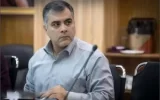The plans of the minister of oil to solve the energy disputes have started

According to Energy Press, according to the oil minister’s announcement to the parliament, the country is facing major challenges in the oil industry; including the field of energy supply and income sources. In addition to the aggravation of the imbalance of gas and gasoline and the lack of resources for financing and investment, the oil industry is facing international restrictions and the possibility of its escalation. Also, from Mohsen Paknejad’s point of view, human resources, structure and bureaucracy are the next major challenges that he has the opportunity to manage and solve within the next four years.
In his proposed program, the Minister of Oil Tazenefs has announced that in addition to implementing and following the general policies of the resistance economy and the 7th Development Plan, he will take action to increase the maximum production of crude oil and natural gas in joint fields. Increasing the recycling rate in independent fields and increasing added value through the completion of the value chain of the oil and gas industry is another program that Paknejad has placed at the top of his work.
In his plan, he has bound himself to monitor 12% of oil exports, 23% of non-oil exports, and 9% of the oil sector in accordance with the general policies of the 7th plan.
The 11th oil minister of the Islamic Republic of Iran has promised to allocate one-third of the 3% of the income from the export of crude oil, gas condensates and net gas exports based on the share of each province to the oil-rich and gas-rich provinces and the remaining two-thirds to other underdeveloped parts of the country. Also, by setting up an account called “Oil and Gas Investment Account”, deposit 60% of the proceeds from export and domestic sales of by-products such as ethane, propane, butane, pentane, sulfur and gas liquids into this account.
The plan of this new investment account is to allocate its resources for the exploration or development of new oil and gas fields or to maintain and increase the production of the country’s fields, especially the increasing pressure in South Pars, to be spent in the plans approved by the regional trade strategic headquarters. It should be used for the construction, retrofitting, renovation and reconstruction of basic infrastructures, and finally, a part of it will be spent on providing equipment and participating in energy consumption optimization plans.
Pak Najad also has a plan for productivity. As stated in the text of his program, it is supposed to conclude long-term contracts separately for the field/reservoir or approved by the Economic Council in the fields that are in operation or have a development contract. The activities of development, exploration and exploitation of the fields should be handed over to the National Oil Company and other applicant companies, so that at the end of the third year of this program, at least 2% and at least 5% of the oil production capacity will be handed over to non-governmental applicant companies by the end of the program. This plan is going to be implemented to collect burner gases.
Tags:oil
- Comments sent by you will be published after approval by site administrators.
- Comments that contain slander will not be published.
- Comments that are not in Persian or not related to the news will not be published.

Comments
Total comments : 0 Awaiting review : 0 Date: 0